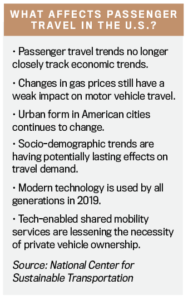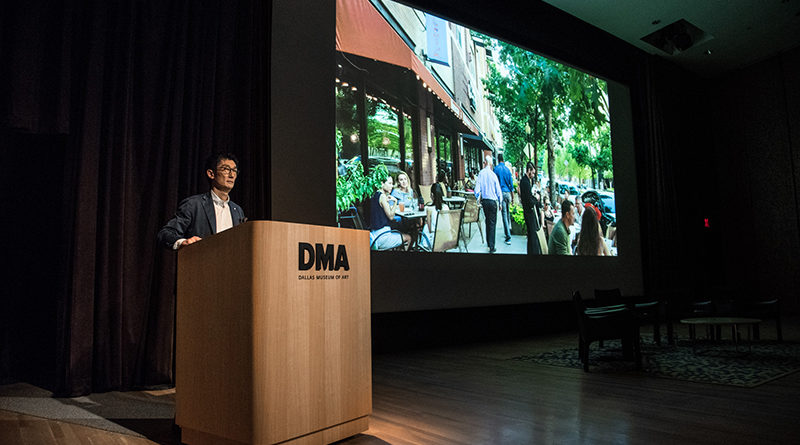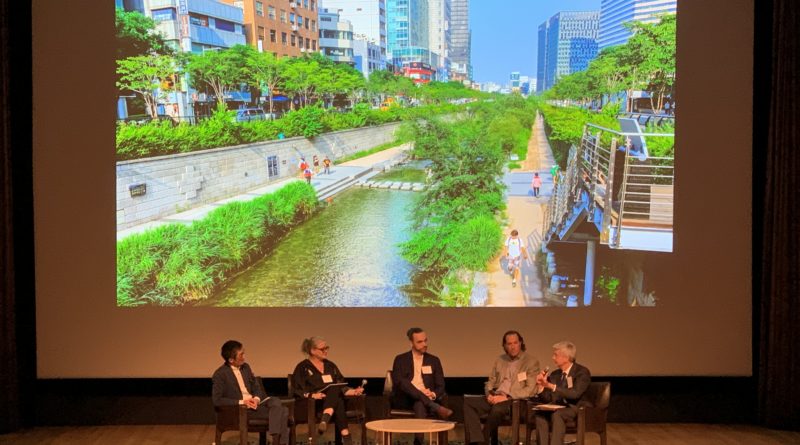Is A ‘New Dallas’ Possible?
The walkability problems in and around Downtown Dallas are no secret.
The Coalition for a New Dallas constantly talks about making Dallas more pedestrian-friendly and recently flew in transportation and city planning experts to discuss possible solutions.
One idea: Tear down a highway.
That’s not as preposterous as it may seem, even for a heavy-traffic area like Dallas, Cary Moon, of Seattle’s People Waterfront Coalition, told those attending the recent Agenda for a New Dallas Summit.
The coalition and D Magazine hosted the summit at the Dallas Museum of Art. People Newspapers is an affiliate of D.
Moon explained that if a highway goes away, the traffic from the highway will most likely “evaporate.”
“Trips dissipate,” she said. “People begin using the train, they walk, maybe they cancel a trip they didn’t really need to go on, or they will bike. In Seattle, the number of bicyclists has doubled.”
Peter Park, former planning director for the cities of Milwaukee and Denver, explained how major highways cut into areas that could be used for green space, public transportation, and more attractive housing locations.
Removing such a highway and replacing it with an “urban development” has proven highly popular in cities where he has worked, Park said.
“More infrastructure came to those cities after removing a major highway,” he said. “Specifically, more than $1 billion in infrastructure has come to downtown Milwaukee since the removal of a significant midwest highway.
“People love urban places. They can’t get enough of them,” Park said. “If an urban area is crowded with walkers, that’s not a bad thing – it means people want to be there.”
The summit also featured a lecture by Christof Spieler, author of Trains, Buses, and People: An Opinionated Atlas of US Transit, and Lilly O’Brien-Kovari, of the Los Angeles Department of Transportation.
Los Angeles serves as an example of how adding a highway actually hurt traffic in and around the city. More than $1 billion was spent on a new highway in 2018, but traffic has increased every month since it’s completion, O’Brien-Kovari said.
So how is Dallas doing?

The American Society of Civil Engineers graded the city as below-average. Dallas earned a C-plus on overall infrastructure and a dismal D on roads and highways.
That obviously wasn’t intended. The original plan called for one major freeway with all neighborhood streets connecting, a design intended to keep homes away from major highways. But as the population has risen, that’s far from the case in 2019.
Park said improvement is possible when highways are used as once intended.
“Freeways would run between cities; then you would get off the freeway and enter the network of roads within the cities,” he explained. “But along the way, the philosophy shifted to running freeways through the cities. There becomes congestion, because everyone is hurrying up to get on and off; they hurry up to wait. What you want is the ability for high connectivity. It’s about adding choices instead of just solving congestion.”












As a builder myself, tearing things down is always the first step to new growth. This ideas seems kinda radical I guess, but I can see how a friendlier urban environment will be attractive to people.